06 October 2023

(Image: Adobe)
The first decade of this century saw China’s meteoric rise as an economic superpower, becoming the world’s second largest economy after the United States. With this rise also came the rapid growth of their space sector and national determination to be a world leader in space exploration.
In 2022, the China Aerospace Science and Technology Corporation (CASC) carried out almost 50 space launches, second only after SpaceX, and also completed construction of their Tiangong space station, which could, if replacements are not developed fast enough, be the only remaining orbital station after the retirement of the ISS at the end of this decade. They also have ambitious lunar and outer space exploration plans and have recently published their vision for a future infrastructure for our solar system.
However Peter Zeihan, geopolitical strategist, suggested that China may soon be facing an economic crisis. Speaking to Joe Rogan at the beginning of the year, Zeihan says that China has 10 years until it faces disaster, blaming it on misrepresenting its actual population numbers, pointing towards an ageing population. China are also facing a potential housing crisis, brought on by regulations which limit property developers’ debts, while also changing course from their long-term policy of debt driven growth.
If Zeihan is right, or if these worrying economic predictions come into fruition, one has to wonder how this might affect their highly ambitious space programme and a Chinese-led vision for our future in space.
China plans Chang’e-8 and to expand Tiangong station
However, one area where China appears may be looking to maintain some kind of leadership is through international cooperation. In the first half of 2024, they will launch their Chang’e-6 mission, which will be the first to retrieve a sample from the far side of the Moon. This mission will also carry payloads from France, Italy, ESA and Pakistan, proving that space can be used to bridge political divides.
Furthermore, details have this week been released regarding their Chang’e-8 mission, scheduled for 2028. The aim is to use the mission to test in-situ resource utilisation (ISRU) technology, an essential step towards establishing their international lunar research station (ILRS) in the 2030’s. With ILRS they also look to gather international partners and build their own vision for an international framework for lunar and outer space exploration. To date they have recruited Russia, South Africa and Venezuela.
Also, the China Academy of Space Technology (CAST) this week presented plans to expand their new Tiangong station, doubling its size from three modules to six. (Interestingly, they will be looking into the use of inflatable modules, perhaps similar to those being developed by US-based Sierra Space.)
Lyu Congming, deputy chief designer of Space Utilization System of China’s human spaceflight program, went on to explain how Tiangong has already been used to initiate international research projects through the United Nations Office for Outer Space Affairs (UNOOSA), and discussed cooperation with the European Space Agency (ESA), according to an article from Space News.
While China may have some economic challenges on the horizon, which may in turn provide budgetary difficulties for its space program, it may be through cooperation that they maintain and expand their global influence. Any expansion of Tiangong and their Chang’e missions may provide such an opportunity.
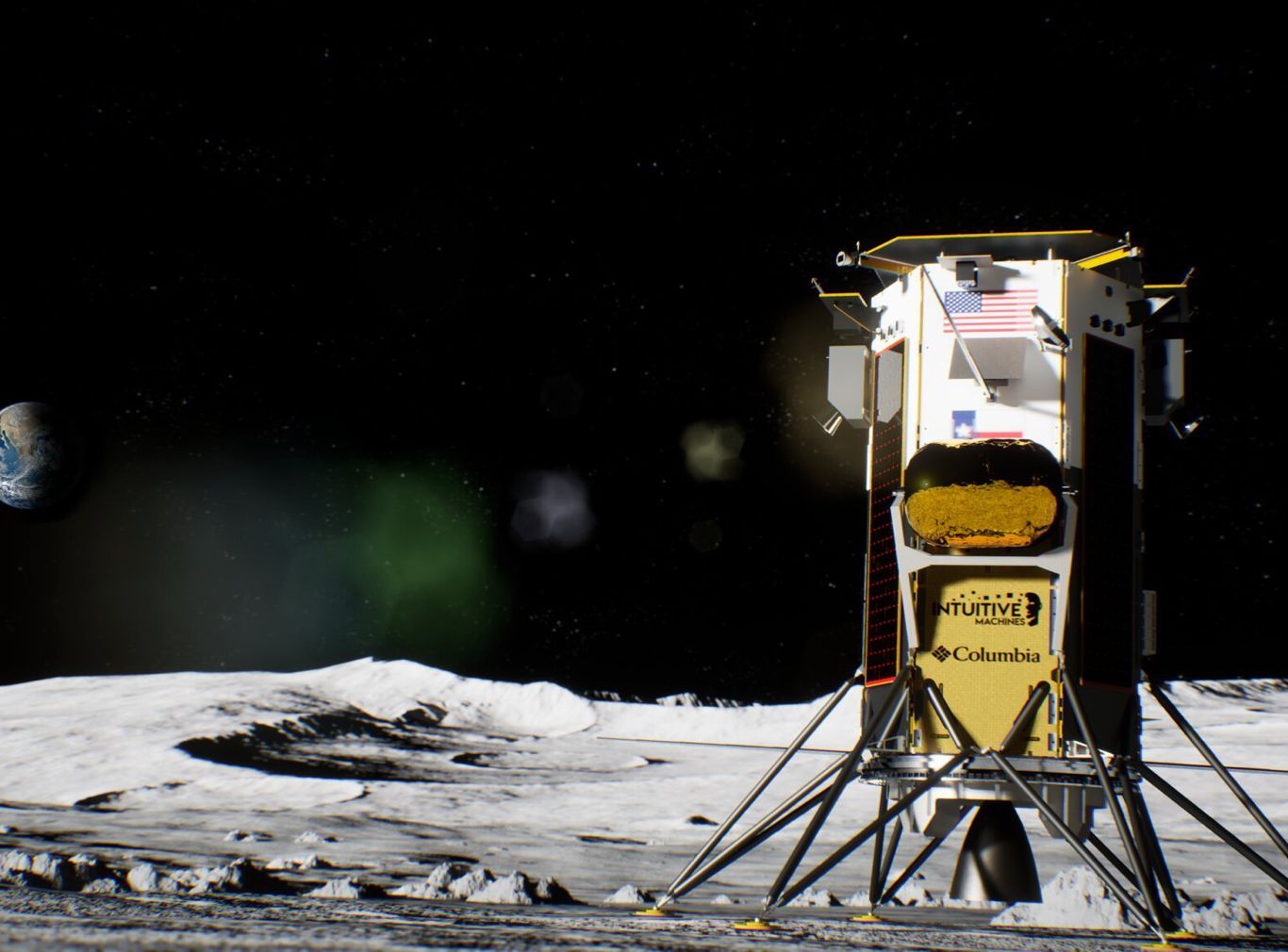
IM-1 Lander (Intuitive Machines)
Updated commercial station plans, lunar landers prepare for next steps, Amazon ready for Kuiper
While there is a possibility that Tiangong could remain the only orbiting space station after the retirement of the ISS, commercial entities have this week given updates regarding possible replacements.
US defence giant Northrop Grumman have announced that they will join-up with Voyager Space and Airbus to develop their new “Starlab” station. The companies will work towards developing autonomous docking systems for the station, which will allow for the use of Northrop’s Cygnus cargo spacecraft.
Blue Origin are another company that have been looking to establish a commercial station, titled “Orbital Reef”. However, according to reports, Blue are expected to end its partnership with Sierra Space on the project. According to Reuters, staff working on the space station project have been reassigned to other projects such as their lunar lander contract with NASA.
Blue are of course also facing delays on the reusable New Glenn rocket, and are still facing setbacks on New Shepard, after they had to abort a launch in September, 2022, and address safety concern laid out by the FAA.
Nevertheless, while Blue may be undergoing some restructuring in order to stay ahead in the private space sector, their founder, Jeff Bezos, may have one eye on another mission looking to takeoff this week.
Amazon are due to launch the first two prototype satellites of their Kuiper mega-constellation the Friday. If successful, Kuiper might look to rival other constellations such as Starlink (US) and OneWeb (UK), with the aim to launch a constellation made-up of 3,236 satellites.
Firefly Aerospace and Intuitive Machines prepare lunar landings
Meanwhile, the commercial sector are also looking to take the next steps in lunar exploration, with Intuitive Machines (US) announcing that their lander is complete and ready to prep for launch. The IM-1 mission will launch with SpaceX in a window that opens on 16 November and heads to the Moon on a short, 5-day journey.
IM-1 will look to become the first successful commercial lunar landing, after I-Space’s failed attempt in April this year. It is also the first mission to launch which is contracted under NASA’s Commercial Lunar Payload Services (CLPS) program.
Additionally, Firefly Aerospace have revealed that they have completed development of their Blue Ghost lunar lander, which is due to launch in 2024, also under the NASA CLPS program.
Firefly, also anticipating a mission to the far side of the Moon in 2026, are a company regularly featuring in the news recently. In September they successfully launched a responsive satellite deployment for the US Space Force, setting a new rapid launch record, and are stepping into competitive territory occupied by companies such as SpaceX and Rocket Lab, offering end-to-end space transportation services.

First fine for space debris (Adobe)
US hand out first space junk fine, Astroscale expand role
In the first case of its kind, the US government has handed out a fine to company for leaving debris in space. The Federal Communications Commission (FCC) presented a $150,000 fine to Dish Network for not sufficiently moving the object out of orbit.
The company was requested to move the EchoStar-7 186 miles further away from Earth, but only managed 76 miles after the satellite ran out of fuel. This case may go to act as precedent for other such cases and is an encouraging sign for an industry that are grappling with the increasing risks of space debris. However, it is yet to be seen how such measures could be enforced on an international level.
Other nations are also attempting to set standards and build towards a sustainable space infrastructure. The UK, for example, established their “Astra Carta”, unveiled by King Charles in June this year. It is intended to act as a framework to bring the private sector together and establish sustainable practices in space.
Furthermore, Japanese debris removal company, Astroscale, are also ramping up their efforts in this area, after receiving $80 million this week to "to develop an on-orbit inspection demonstration mission that will image and diagnose a large, defunct satellite in space,” according to a press release from the company on Monday. This comes after the company received a contract from the US government last month, in which they have been requested to develop a in-orbit satellite refuelling vehicle.
Astroscale have already carried out a debris removal demonstration in 2021, with their ELSA-d spacecraft, and are looking to launch their ELSA-M vehicle in 2025, which will also employ a magnetic system to capture debris. They will also look to demonstrate debris removal using a robotic arm in 2026.
In the nearer future, the company will launch their ADRAS-J spacecraft, designed to rendezvous with a piece of debris and collect images and data in order to better understand how to remove it. That mission will hopefully launch later this year.
While China may be looking generate leadership through lunar exploration, scientific research and cooperation on Tiangong, there may be another form of leadership emerging, forged by those who can make space safe for the future.
External Links
This Week
*News articles posted here are not property of ANASDA GmbH and belong to their respected owners. Postings here are external links only.
Our future in space
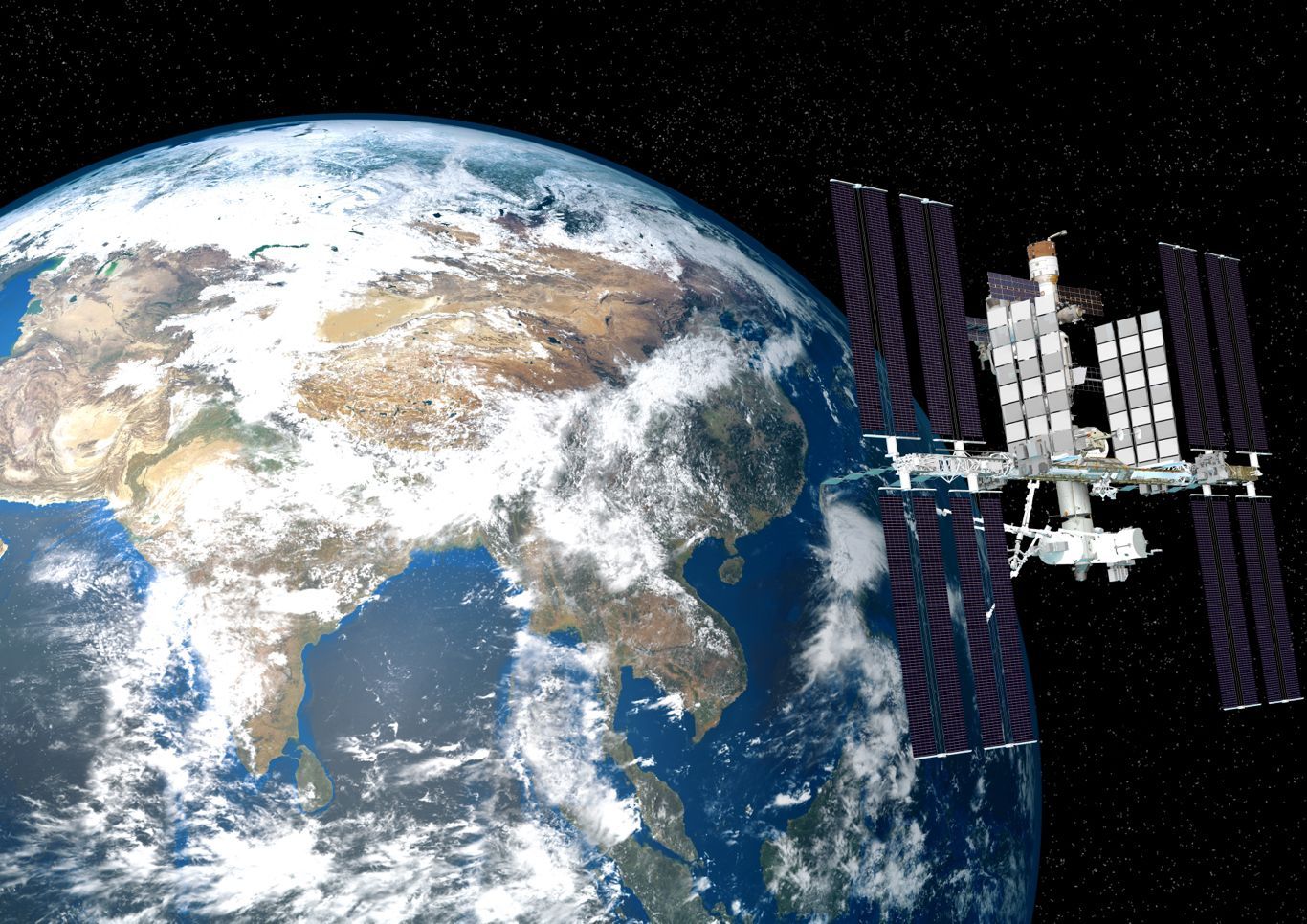
(Image: Adobe)
06 October 2023
Chinese space cooperation, updates for commercial landers & stations, and first fines for space debris - Space News Roundup
The first decade of this century saw China’s meteoric rise as an economic superpower, becoming the world’s second largest economy after the United States. With this rise also came the rapid growth of their space sector and national determination to be a world leader in space exploration.
In 2022, the China Aerospace Science and Technology Corporation (CASC) carried out almost 50 space launches, second only after SpaceX, and also completed construction of their Tiangong space station, which could, if replacements are not developed fast enough, be the only remaining orbital station after the retirement of the ISS at the end of this decade. They also have ambitious lunar and outer space exploration plans and have recently published their vision for a future infrastructure for our solar system.
However Peter Zeihan, geopolitical strategist, suggested that China may soon be facing an economic crisis. Speaking to Joe Rogan at the beginning of the year, Zeihan says that China has 10 years until it faces disaster, blaming it on misrepresenting its actual population numbers, pointing towards an ageing population. China are also facing a potential housing crisis, brought on by regulations which limit property developers’ debts, while also changing course from their long-term policy of debt driven growth.
If Zeihan is right, or if these worrying economic predictions come into fruition, one has to wonder how this might affect their highly ambitious space programme and a Chinese-led vision for our future in space.
China plans Chang’e-8 and to expand Tiangong station
However, one area where China appears may be looking to maintain some kind of leadership is through international cooperation. In the first half of 2024, they will launch their Chang’e-6 mission, which will be the first to retrieve a sample from the far side of the Moon. This mission will also carry payloads from France, Italy, ESA and Pakistan, proving that space can be used to bridge political divides.
Furthermore, details have this week been released regarding their Chang’e-8 mission, scheduled for 2028. The aim is to use the mission to test in-situ resource utilisation (ISRU) technology, an essential step towards establishing their international lunar research station (ILRS) in the 2030’s. With ILRS they also look to gather international partners and build their own vision for an international framework for lunar and outer space exploration. To date they have recruited Russia, South Africa and Venezuela.
Also, the China Academy of Space Technology (CAST) this week presented plans to expand their new Tiangong station, doubling its size from three modules to six. (Interestingly, they will be looking into the use of inflatable modules, perhaps similar to those being developed by US-based Sierra Space.)
Lyu Congming, deputy chief designer of Space Utilization System of China’s human spaceflight program, went on to explain how Tiangong has already been used to initiate international research projects through the United Nations Office for Outer Space Affairs (UNOOSA), and discussed cooperation with the European Space Agency (ESA), according to an article from Space News.
While China may have some economic challenges on the horizon, which may in turn provide budgetary difficulties for its space program, it may be through cooperation that they maintain and expand their global influence. Any expansion of Tiangong and their Chang’e missions may provide such an opportunity.
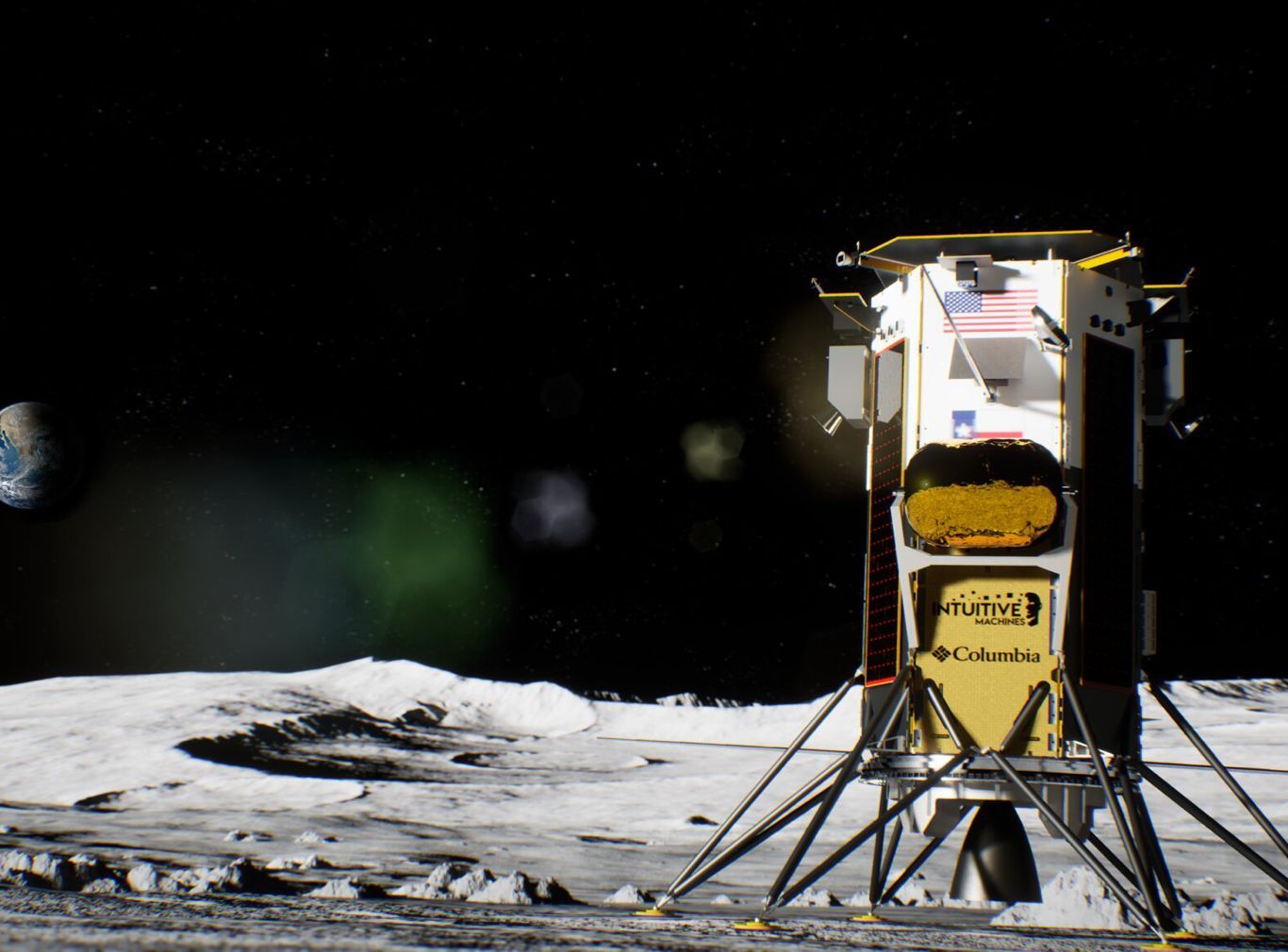
IM-1 Lander (Intuitive Machines)
Updated commercial station plans, lunar landers prepare for next steps, Amazon ready for Kuiper
While there is a possibility that Tiangong could remain the only orbiting space station after the retirement of the ISS, commercial entities have this week given updates regarding possible replacements.
US defence giant Northrop Grumman have announced that they will join-up with Voyager Space and Airbus to develop their new “Starlab” station. The companies will work towards developing autonomous docking systems for the station, which will allow for the use of Northrop’s Cygnus cargo spacecraft.
Blue Origin are another company that have been looking to establish a commercial station, titled “Orbital Reef”. However, according to reports, Blue are expected to end its partnership with Sierra Space on the project. According to Reuters, staff working on the space station project have been reassigned to other projects such as their lunar lander contract with NASA.
Blue are of course also facing delays on the reusable New Glenn rocket, and are still facing setbacks on New Shepard, after they had to abort a launch in September, 2022, and address safety concern laid out by the FAA.
Nevertheless, while Blue may be undergoing some restructuring in order to stay ahead in the private space sector, their founder, Jeff Bezos, may have one eye on another mission looking to takeoff this week.
Amazon are due to launch the first two prototype satellites of their Kuiper mega-constellation the Friday. If successful, Kuiper might look to rival other constellations such as Starlink (US) and OneWeb (UK), with the aim to launch a constellation made-up of 3,236 satellites.
Firefly Aerospace and Intuitive Machines prepare lunar landings
Meanwhile, the commercial sector are also looking to take the next steps in lunar exploration, with Intuitive Machines (US) announcing that their lander is complete and ready to prep for launch. The IM-1 mission will launch with SpaceX in a window that opens on 16 November and heads to the Moon on a short, 5-day journey.
IM-1 will look to become the first successful commercial lunar landing, after I-Space’s failed attempt in April this year. It is also the first mission to launch which is contracted under NASA’s Commercial Lunar Payload Services (CLPS) program.
Additionally, Firefly Aerospace have revealed that they have completed development of their Blue Ghost lunar lander, which is due to launch in 2024, also under the NASA CLPS program.
Firefly, also anticipating a mission to the far side of the Moon in 2026, are a company regularly featuring in the news recently. In September they successfully launched a responsive satellite deployment for the US Space Force, setting a new rapid launch record, and are stepping into competitive territory occupied by companies such as SpaceX and Rocket Lab, offering end-to-end space transportation services.

First fine for space debris (Adobe)
US hand out first space junk fine, Astroscale expand role
In the first case of its kind, the US government has handed out a fine to company for leaving debris in space. The Federal Communications Commission (FCC) presented a $150,000 fine to Dish Network for not sufficiently moving the object out of orbit.
The company was requested to move the EchoStar-7 186 miles further away from Earth, but only managed 76 miles after the satellite ran out of fuel. This case may go to act as precedent for other such cases and is an encouraging sign for an industry that are grappling with the increasing risks of space debris. However, it is yet to be seen how such measures could be enforced on an international level.
Other nations are also attempting to set standards and build towards a sustainable space infrastructure. The UK, for example, established their “Astra Carta”, unveiled by King Charles in June this year. It is intended to act as a framework to bring the private sector together and establish sustainable practices in space.
Furthermore, Japanese debris removal company, Astroscale, are also ramping up their efforts in this area, after receiving $80 million this week to "to develop an on-orbit inspection demonstration mission that will image and diagnose a large, defunct satellite in space,” according to a press release from the company on Monday. This comes after the company received a contract from the US government last month, in which they have been requested to develop a in-orbit satellite refuelling vehicle.
Astroscale have already carried out a debris removal demonstration in 2021, with their ELSA-d spacecraft, and are looking to launch their ELSA-M vehicle in 2025, which will also employ a magnetic system to capture debris. They will also look to demonstrate debris removal using a robotic arm in 2026.
In the nearer future, the company will launch their ADRAS-J spacecraft, designed to rendezvous with a piece of debris and collect images and data in order to better understand how to remove it. That mission will hopefully launch later this year.
While China may be looking generate leadership through lunar exploration, scientific research and cooperation on Tiangong, there may be another form of leadership emerging, forged by those who can make space safe for the future.
Share this article
External Links
This Week
*News articles posted here are not property of ANASDA GmbH and belong to their respected owners. Postings here are external links only.
06 October 2023
Chinese space cooperation, updates for commercial landers & stations, and first fines for space debris - Space News Roundup
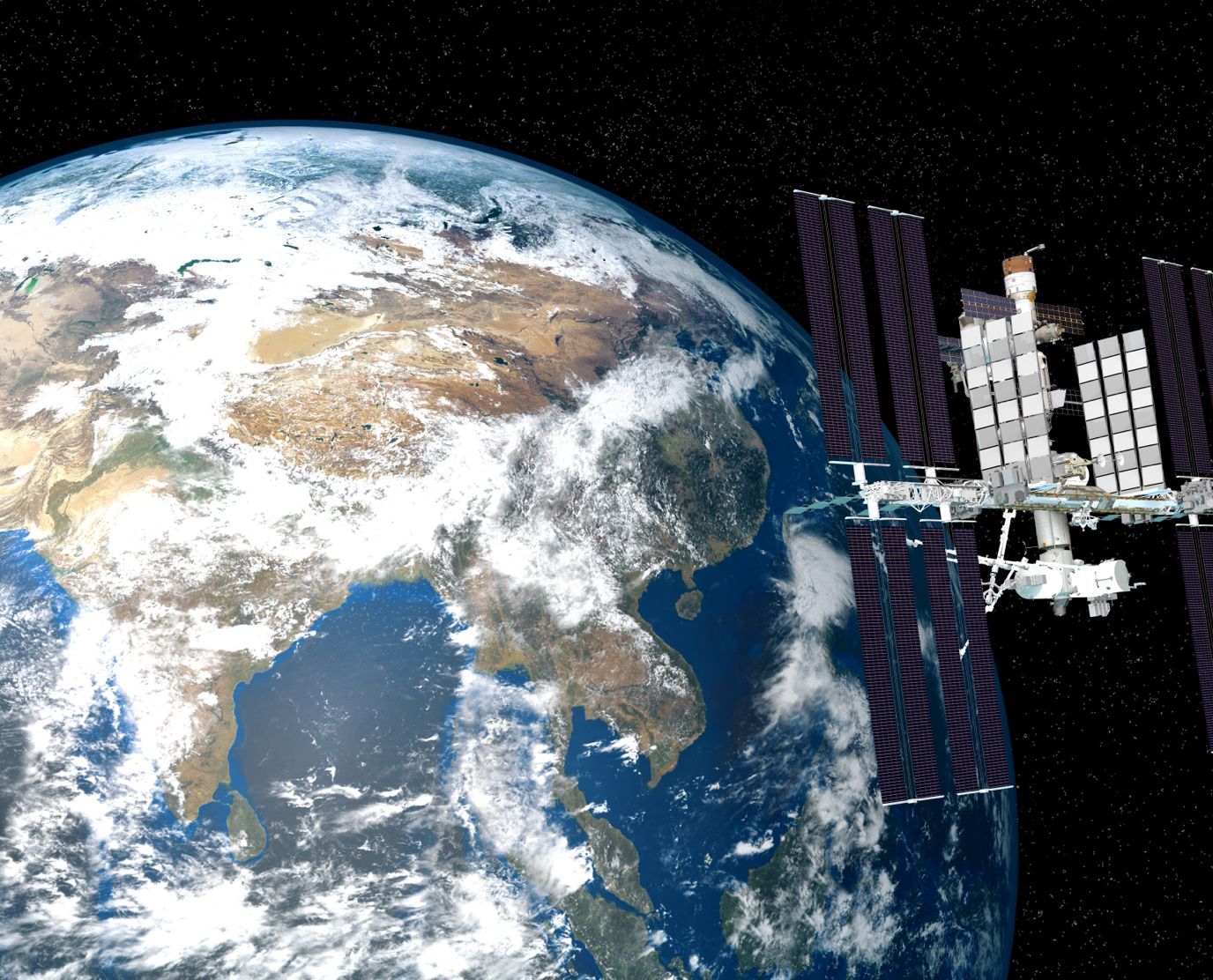
(Image: Adobe)
The first decade of this century saw China’s meteoric rise as an economic superpower, becoming the world’s second largest economy after the United States. With this rise also came the rapid growth of their space sector and national determination to be a world leader in space exploration.
In 2022, the China Aerospace Science and Technology Corporation (CASC) carried out almost 50 space launches, second only after SpaceX, and also completed construction of their Tiangong space station, which could, if replacements are not developed fast enough, be the only remaining orbital station after the retirement of the ISS at the end of this decade. They also have ambitious lunar and outer space exploration plans and have recently published their vision for a future infrastructure for our solar system.
However Peter Zeihan, geopolitical strategist, suggested that China may soon be facing an economic crisis. Speaking to Joe Rogan at the beginning of the year, Zeihan says that China has 10 years until it faces disaster, blaming it on misrepresenting its actual population numbers, pointing towards an ageing population. China are also facing a potential housing crisis, brought on by regulations which limit property developers’ debts, while also changing course from their long-term policy of debt driven growth.
If Zeihan is right, or if these worrying economic predictions come into fruition, one has to wonder how this might affect their highly ambitious space programme and a Chinese-led vision for our future in space.
China plans Chang’e-8 and to expand Tiangong station
However, one area where China appears may be looking to maintain some kind of leadership is through international cooperation. In the first half of 2024, they will launch their Chang’e-6 mission, which will be the first to retrieve a sample from the far side of the Moon. This mission will also carry payloads from France, Italy, ESA and Pakistan, proving that space can be used to bridge political divides.
Furthermore, details have this week been released regarding their Chang’e-8 mission, scheduled for 2028. The aim is to use the mission to test in-situ resource utilisation (ISRU) technology, an essential step towards establishing their international lunar research station (ILRS) in the 2030’s. With ILRS they also look to gather international partners and build their own vision for an international framework for lunar and outer space exploration. To date they have recruited Russia, South Africa and Venezuela.
Also, the China Academy of Space Technology (CAST) this week presented plans to expand their new Tiangong station, doubling its size from three modules to six. (Interestingly, they will be looking into the use of inflatable modules, perhaps similar to those being developed by US-based Sierra Space.)
Lyu Congming, deputy chief designer of Space Utilization System of China’s human spaceflight program, went on to explain how Tiangong has already been used to initiate international research projects through the United Nations Office for Outer Space Affairs (UNOOSA), and discussed cooperation with the European Space Agency (ESA), according to an article from Space News.
While China may have some economic challenges on the horizon, which may in turn provide budgetary difficulties for its space program, it may be through cooperation that they maintain and expand their global influence. Any expansion of Tiangong and their Chang’e missions may provide such an opportunity.
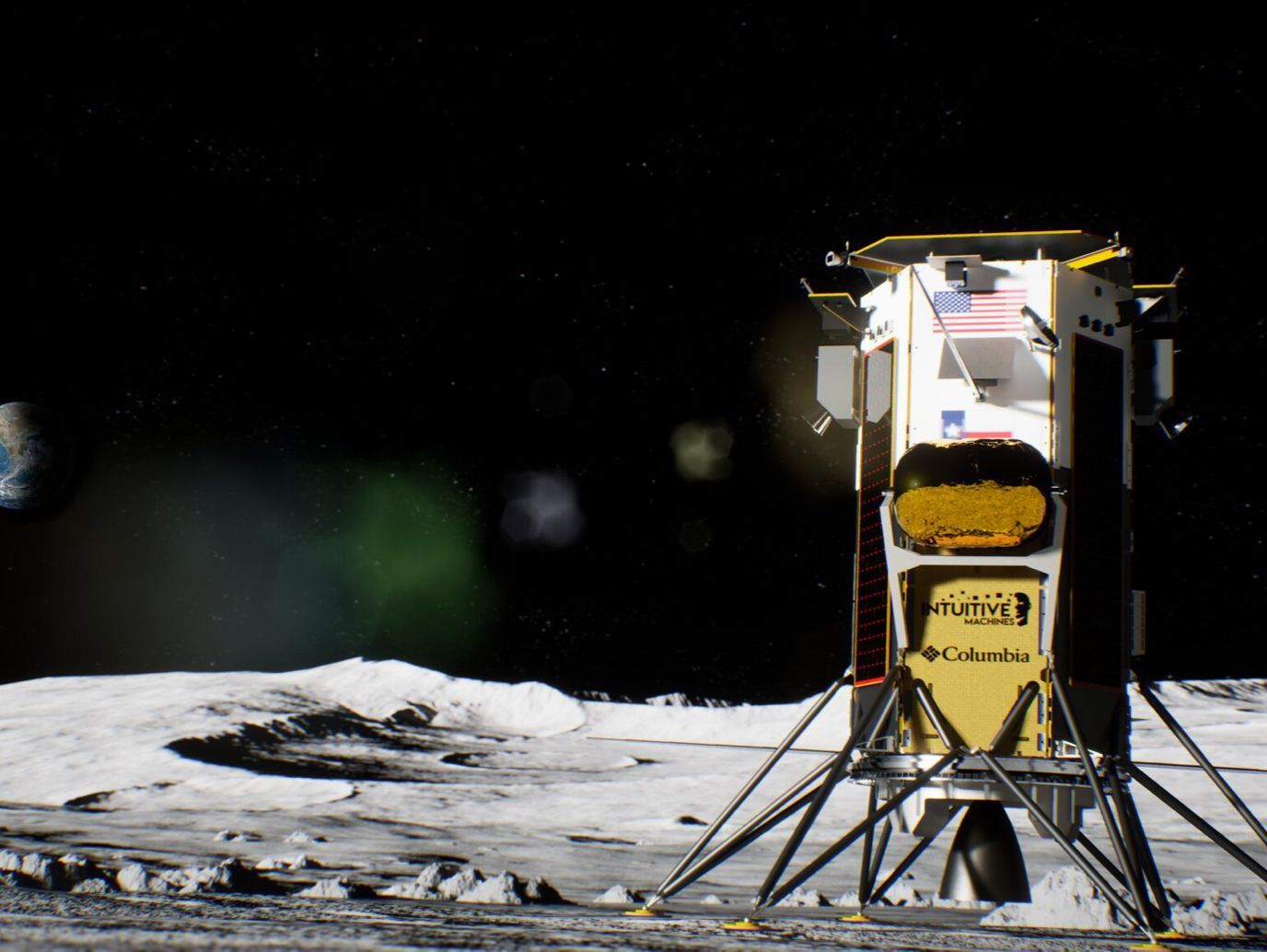
IM-1 Lander (Intuitive Machines)
Updated commercial station plans, lunar landers prepare for next steps, Amazon ready for Kuiper
While there is a possibility that Tiangong could remain the only orbiting space station after the retirement of the ISS, commercial entities have this week given updates regarding possible replacements.
US defence giant Northrop Grumman have announced that they will join-up with Voyager Space and Airbus to develop their new “Starlab” station. The companies will work towards developing autonomous docking systems for the station, which will allow for the use of Northrop’s Cygnus cargo spacecraft.
Blue Origin are another company that have been looking to establish a commercial station, titled “Orbital Reef”. However, according to reports, Blue are expected to end its partnership with Sierra Space on the project. According to Reuters, staff working on the space station project have been reassigned to other projects such as their lunar lander contract with NASA.
Blue are of course also facing delays on the reusable New Glenn rocket, and are still facing setbacks on New Shepard, after they had to abort a launch in September, 2022, and address safety concern laid out by the FAA.
Nevertheless, while Blue may be undergoing some restructuring in order to stay ahead in the private space sector, their founder, Jeff Bezos, may have one eye on another mission looking to takeoff this week.
Amazon are due to launch the first two prototype satellites of their Kuiper mega-constellation the Friday. If successful, Kuiper might look to rival other constellations such as Starlink (US) and OneWeb (UK), with the aim to launch a constellation made-up of 3,236 satellites.
Firefly Aerospace and Intuitive Machines prepare lunar landings
Meanwhile, the commercial sector are also looking to take the next steps in lunar exploration, with Intuitive Machines (US) announcing that their lander is complete and ready to prep for launch. The IM-1 mission will launch with SpaceX in a window that opens on 16 November and heads to the Moon on a short, 5-day journey.
IM-1 will look to become the first successful commercial lunar landing, after I-Space’s failed attempt in April this year. It is also the first mission to launch which is contracted under NASA’s Commercial Lunar Payload Services (CLPS) program.
Additionally, Firefly Aerospace have revealed that they have completed development of their Blue Ghost lunar lander, which is due to launch in 2024, also under the NASA CLPS program.
Firefly, also anticipating a mission to the far side of the Moon in 2026, are a company regularly featuring in the news recently. In September they successfully launched a responsive satellite deployment for the US Space Force, setting a new rapid launch record, and are stepping into competitive territory occupied by companies such as SpaceX and Rocket Lab, offering end-to-end space transportation services.

First fine for space debris (Adobe)
US hand out first space junk fine, Astroscale expand role
In the first case of its kind, the US government has handed out a fine to company for leaving debris in space. The Federal Communications Commission (FCC) presented a $150,000 fine to Dish Network for not sufficiently moving the object out of orbit.
The company was requested to move the EchoStar-7 186 miles further away from Earth, but only managed 76 miles after the satellite ran out of fuel. This case may go to act as precedent for other such cases and is an encouraging sign for an industry that are grappling with the increasing risks of space debris. However, it is yet to be seen how such measures could be enforced on an international level.
Other nations are also attempting to set standards and build towards a sustainable space infrastructure. The UK, for example, established their “Astra Carta”, unveiled by King Charles in June this year. It is intended to act as a framework to bring the private sector together and establish sustainable practices in space.
Furthermore, Japanese debris removal company, Astroscale, are also ramping up their efforts in this area, after receiving $80 million this week to "to develop an on-orbit inspection demonstration mission that will image and diagnose a large, defunct satellite in space,” according to a press release from the company on Monday. This comes after the company received a contract from the US government last month, in which they have been requested to develop a in-orbit satellite refuelling vehicle.
Astroscale have already carried out a debris removal demonstration in 2021, with their ELSA-d spacecraft, and are looking to launch their ELSA-M vehicle in 2025, which will also employ a magnetic system to capture debris. They will also look to demonstrate debris removal using a robotic arm in 2026.
In the nearer future, the company will launch their ADRAS-J spacecraft, designed to rendezvous with a piece of debris and collect images and data in order to better understand how to remove it. That mission will hopefully launch later this year.
While China may be looking generate leadership through lunar exploration, scientific research and cooperation on Tiangong, there may be another form of leadership emerging, forged by those who can make space safe for the future.
Share this article
External Links
This Week
*News articles posted here are not property of ANASDA GmbH and belong to their respected owners. Postings here are external links only.


























